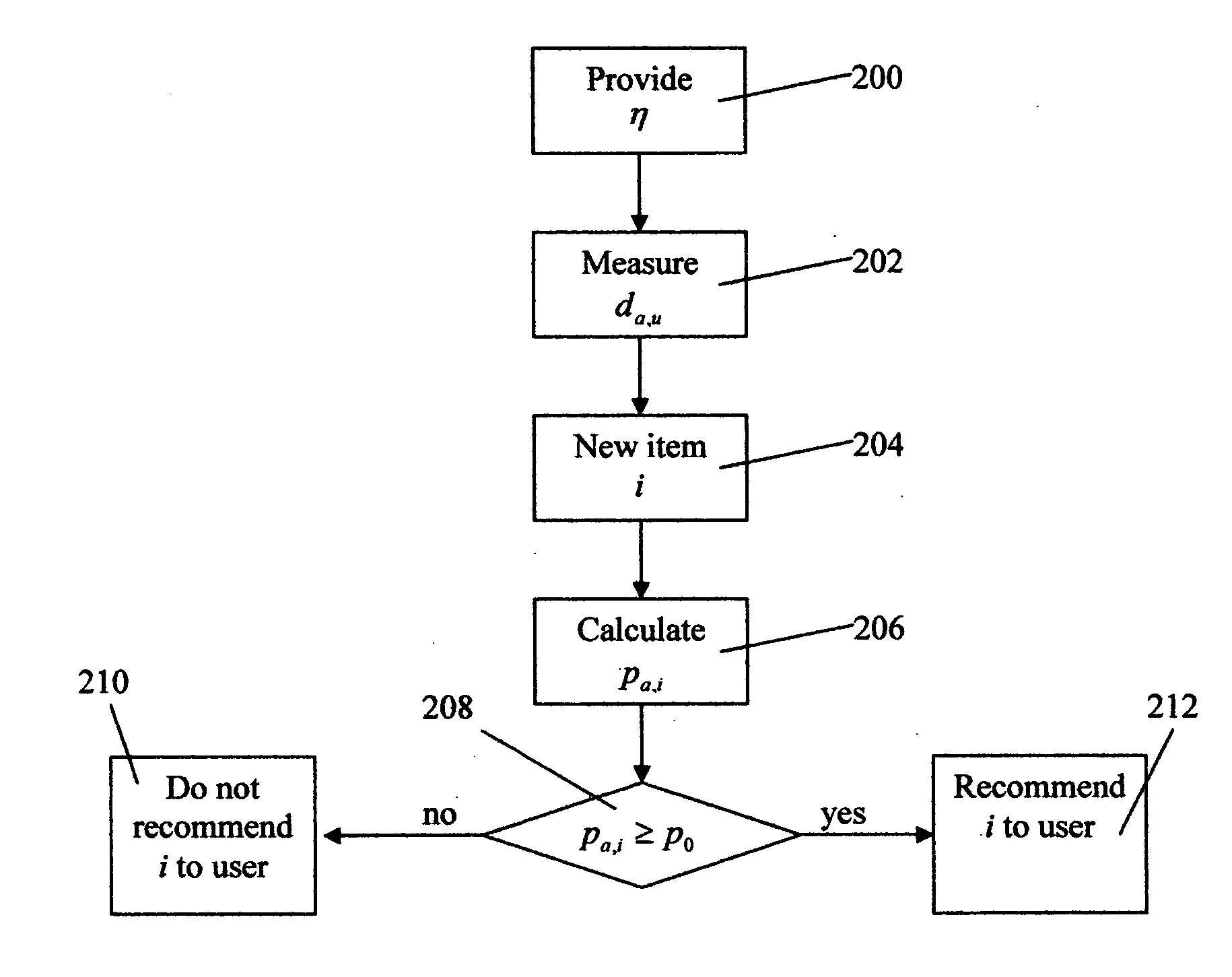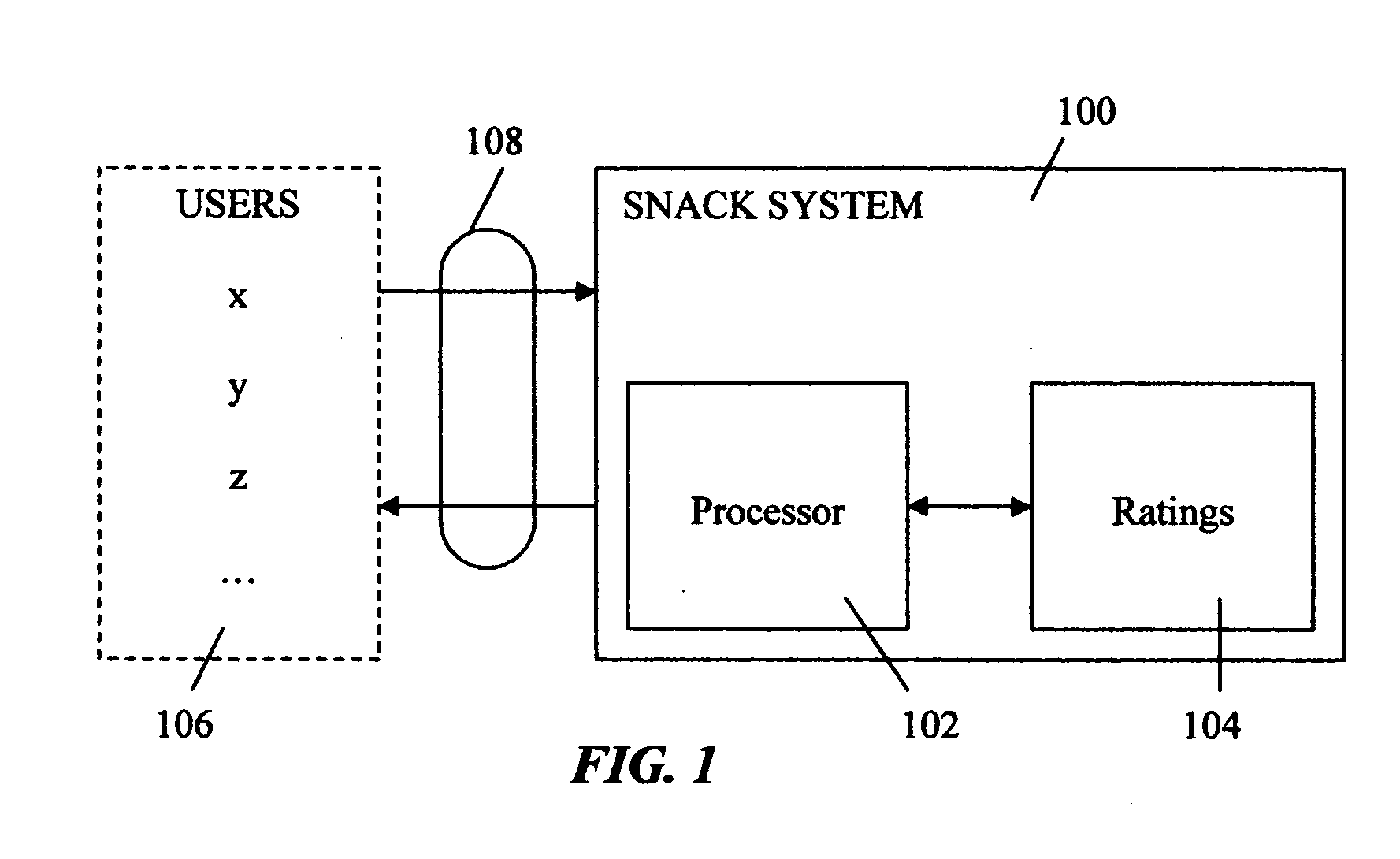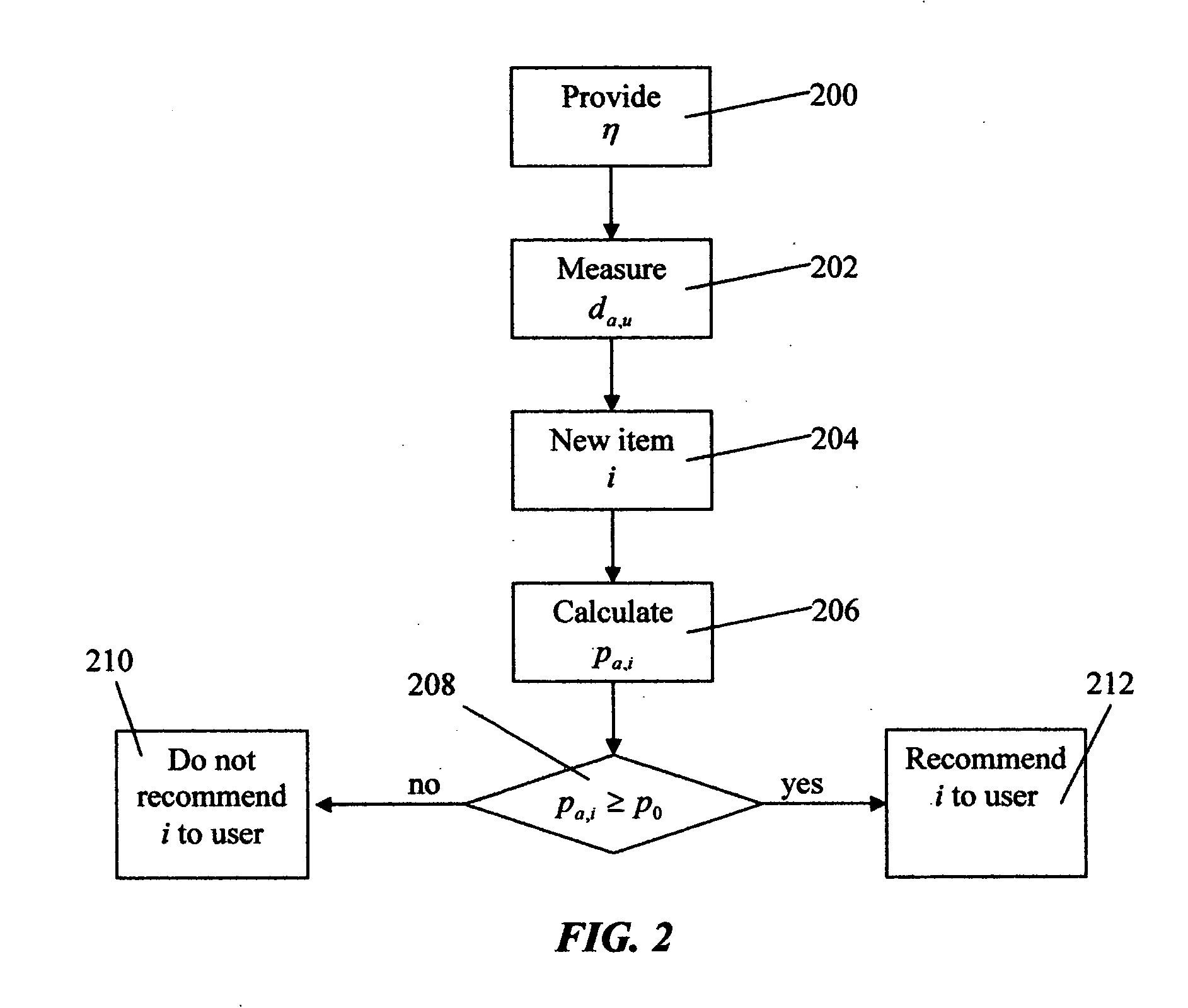System and method for utilizing social networks for collaborative filtering
a social network and filtering technology, applied in the field of collaborative filtering system, can solve the problems of insufficient information to truly differentiate between random users, inability to compute the similarity of neighbors in neighbor-based approaches, and inability to meet the needs of random users, so as to improve the collaborative filtering system and improve the recommendation of items.
- Summary
- Abstract
- Description
- Claims
- Application Information
AI Technical Summary
Benefits of technology
Problems solved by technology
Method used
Image
Examples
embodiment
Preferred Embodiment
[0034] There exists a set of ratings ru,j corresponding to user u's rating for item j. Let Iu be the set of items that user u has rated. The average rating for user u is r_u=1Iu∑j∈Iu ru,j.
There exists an active user, denoted by subscript a. The goal is to predict the active user's preference for an item i, or pa,i. The prediction is done using the formula, pa,i=r_a+∑u wa,u″(ru,i-r_u)∑u wa,u″,
where the summation over u is over the set of non-active users who have rated item i, and wa,u is the similarity (also known as weight or correlation) between the active user a and the neighbor u. To define this similarity we first define wa,u, which is the Pearson correlation coefficient, wa,u=∑i (ra,i-r_a)(ru,i-r_u)∑i (ra,i-r_a)2∑i (ru,i-r_u)2.
The summations over the set i are over the set of items that both user a and user u have rated. The Pearson correlation tries to measure the weight between the two users using just rated items alone. Unfortunatel...
PUM
 Login to View More
Login to View More Abstract
Description
Claims
Application Information
 Login to View More
Login to View More - R&D
- Intellectual Property
- Life Sciences
- Materials
- Tech Scout
- Unparalleled Data Quality
- Higher Quality Content
- 60% Fewer Hallucinations
Browse by: Latest US Patents, China's latest patents, Technical Efficacy Thesaurus, Application Domain, Technology Topic, Popular Technical Reports.
© 2025 PatSnap. All rights reserved.Legal|Privacy policy|Modern Slavery Act Transparency Statement|Sitemap|About US| Contact US: help@patsnap.com



